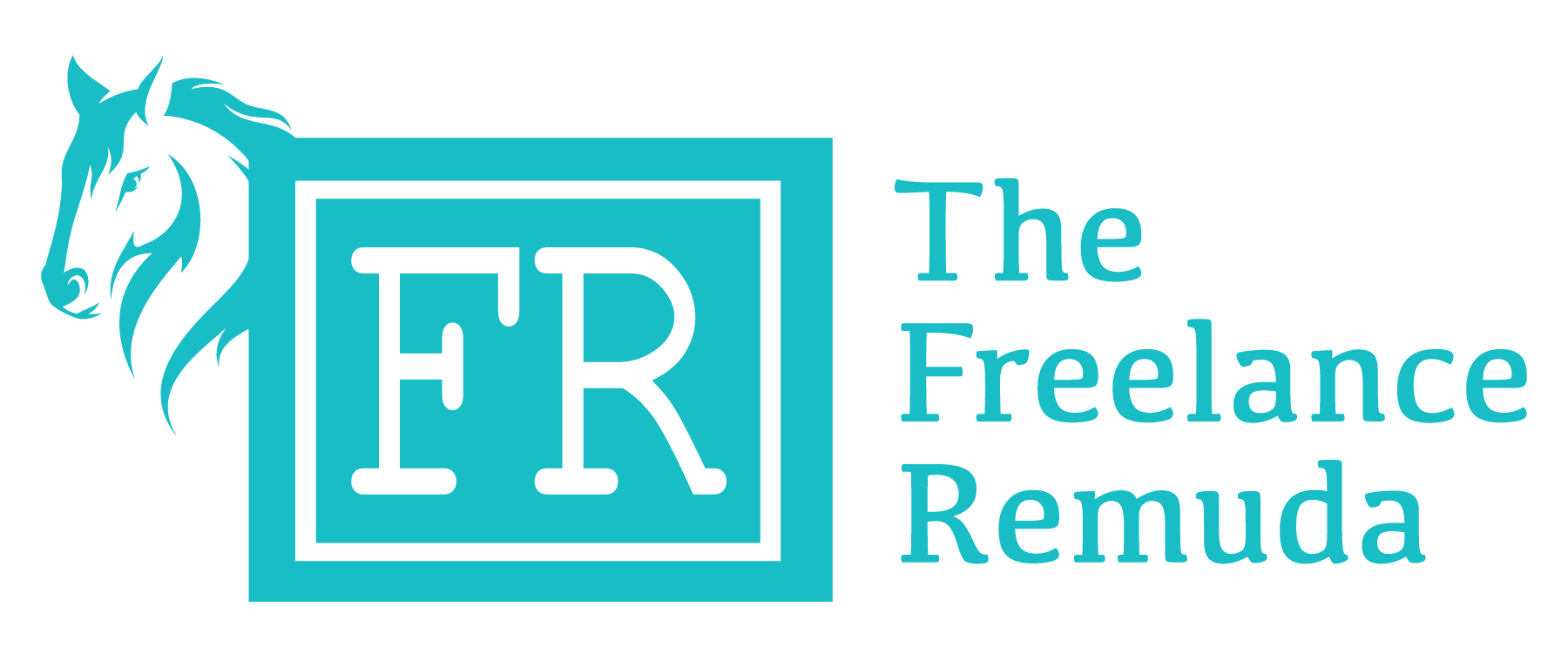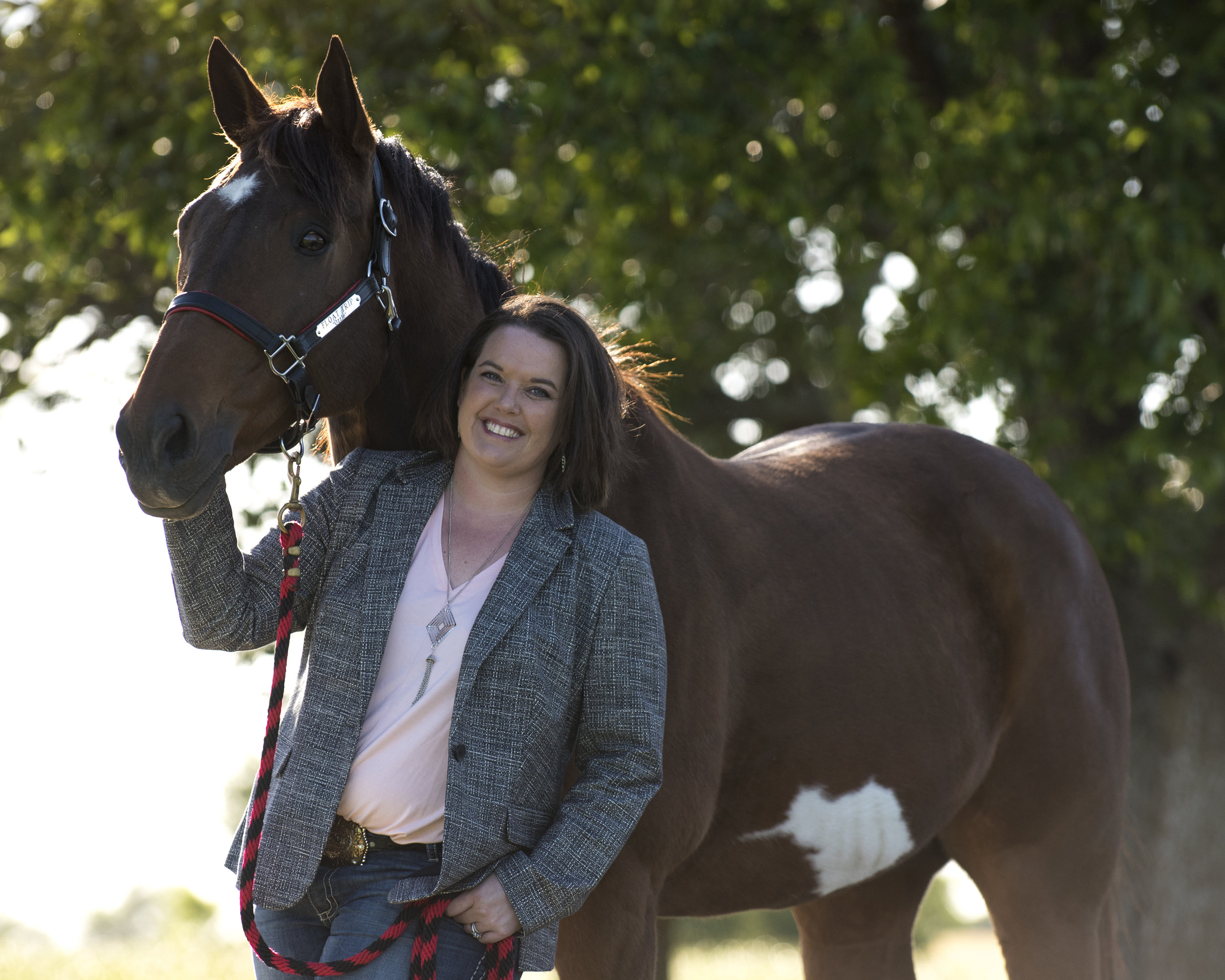Episode 29: Writing for the Brand with Jessica Hein
Photo Credit: Rachel Florman/Paint Horse Journal
Jessica Hein is the Senior Director of MemberCare & Publications for the American Paint Horse Association. She brought a lifetime of agricultural and equine experience to her role at APHA, and during her tenure at the association, she has moved up through the ranks of its multiple publications to her current position. An award-winning writer and photographer, Jessica lives just outside Fort Worth in Justin, Texas, with her husband, horses and dogs—and soon, a new baby. I worked with Jessica at APHA for nearly five years, and she had a huge role in shaping the writer and journalist I am today. Both Kate and I consider Jessica a great asset to the equine media industry, and we’re so pleased to have her on our show today. We look forward to her sharing her advice and wisdom, and we think you will too.
Jessica, tell us about your barn kids and what they’re up to these days?
Ozzie – 1998 APHA gelding. Former racehorse turned hunter-jumper, turned successful western dressage mount. Yearling – Solid Paint-Bred named Bentley. Youngest horse she’s ever had, working on ground work.
Before we hit the main topics, can you talk to us about your path to your director position? What steps did you take in your education and career to get here?
High school: Jessica wanted to be a large animal vet… but was not her cup of tea. Next interest was agricultural communications. Her lifelong passion for horse magazines led her to go to Texas Tech’s agricultural communication program. She graduated in 2004. Continued on to pursue a Master’s in agriculture education with a communication emphasis, graduated in 2005. Discovered American Horse Publications while she was a student, applied for the student award in 2003. That kickstarted her involvement with AHP, networking and freelancing while in college. Jessica joined the American Paint Horse Association as a staff writer for the Paint Horse Journal in 2006. She progressed to associate editor, managing editor, editor for all of APHA’s publications, and currently—she is Senior Director of MemberCare and Publications.
Can you tell us about the different print publications APHA produces—audience, message, etc?
APHA’s media team also produces content for APHA.com and much of the association’s social media.
Paint Horse Journal: Founded in 1966. Legacy publication, official voice of APHA. “Your very best go-to barn friend. Person in the know about what’s going on with training, health.” Informative, chatty, authority on subject. Paint Horses are central to the brand.
Chrome: born in 2013, lifestyle brand. For people who love Paint Horses but maybe don’t own Paints. Keep them connected to the horse they love, whether or not they’re deeply involved in horses. Chrome unites members through love of Paint Horses. Paints are the running theme in the background. Not the main elements of the story. Platform to showcase members uniqueness, western lifestyle that goes along with Paint Horses. “Your trendy, stylish best friend you like to hang out with. Might go trail ride with, whip up a gourmet dinner, have a really cool party, always looks the part of that Western trendy lifestyle.”
Both publications highlight the versatility of the Paint Horse breed and Western heritage.
How much do APHA magazines and web rely on freelance work?
Eighty percent. Editorial team is two people at APHA. Core group of freelancers produce the content. The website and social media team at APHA produces that content.
Can you talk to us about how important matching the writing and photography style is for your magazines? Why does it matter?
Paint Horse Journal and Chrome are different by design, to serve two different purposes. Articles and writing styles fit each differently, to speak to those audiences and publications. The same story may not work for both publications, but there can be some crossover.
Paint Horse Journal - aimed at reader actively engaged in APHA world. Breeder, trainer, exhibitor. Someone with intermediate knowledge or above. Not too many beginner stories. Some complex medical and scientific stories. Always bring the lower level to make sure readers can understand concept. Straightforward, succinct, well-defined purpose. Take away info. Good-quality photos.
Chrome - writing style is more relaxed, personable. Humor is often used where appropriate. Style and elegance. Targeting 40-60 year old woman in charge of the horses in her household. Chrome is more experiential writing. Writing styles for the two publications differ. Want writers to bring readers into the moment. Putting reader in that moment. Heavier on adverbs, adjectives, sensory descriptions. In-house, called “Chromatizing” the writing to be more experiential. Photos are extremely important – coffee-table style book, photos are big and beautiful.
How important is it for the freelancer to bring the right style to the story?
The most valuable freelancers make an effort to fit the style of each publication. Chrome allows you to stretch your creativity. First-person style can fit there. Experiential. It takes conscious writing, and a good freelancer will do that for this magazine. The editor can “chromatize” but don’t want to edit out the freelancer’s style.
I know you’ve been at an association for the majority of your career. Can you talk a little bit about some of the idiosyncrasies inherent to association publications that freelancers may not be aware of?
Every publication has its own house style. Paint Horse does things different—not right or wrong, it’s just its style. It helps when freelancers try to understand that. APHA has a style guide available for freelancers. Ex: Paint Horse, not THE APHA, breed-specific terminologies.
The publication is always striving to promote the Paint Horse breed and association. Through writing and photographs. It is essential to the stories and layouts. It’s really important for APHA publications to have registered horses and APHA members in its pages. They’re not looking for hard-hitting, breaking news because it’s a print publication. Looking for APHA- or Paint Horse-specific content. Example: genetics. The overarching theme is to promote the Paint Horse.
How important is a colorful Paint for photos?
A regular registry Paint is naturally preferred because it visually represents the breed’s marketable different. Solid Paints are also valued, of course. But keeping in mind that the color is what sets Paints apart in marketing.
Tell us the secret to becoming an invaluable freelancer for APHA?
First and foremost, read and understand the publications. Be familiar with the publication’s style and preferred content. Understand word count range and topic focus. Ask editor up front if you have any questions. Don’t turn in a 3000-word story when you were asked to write a 1500-word story. It’s better to write a little short than a lot longer.
She loves when a freelancer includes a title, dek and subhead—even if they don’t stay, it’s a place to start. And photo captions or information.
Chrome rarely uses captions in photos, whereas the PHJ does. However, it’s helpful to have information with each photo.
What are some things that will get a freelancer blacklisted?
Ignoring instructions, work that is habitually late. The magazine can work with freelancers in emergencies, but when it becomes a habit, it makes her think you can’t be counted on. Ignoring style or arguing about style points. Poor etiquette – the horse world is a really small industry. If you talk negatively about the breed or the magazine, it will not endear you to the editor. You are promoting the breed when you’re working on a story for the magazine. If you don’t make it easy to do business, that’s more work for the editor. Jessica doesn’t want to chase you down to pay you—it affects her budgets, and it’s a hassle. Queries from a freelancer they’ve not worked with demanding she assign them a story. She’d rather you bring a story idea—she’d be more likely to let you have that assignment.
Any advice to aspiring freelancers that may want to work with APHA?
· Read and study the publications you want to work with. Learn how their articles are structured. Are they using Q&A, or are they traditional profiles? “7 tips” style training stories or is it longer form pieces? Newspaper style or feature style? Those things will help you become an invaluable writer.
· Show that you understand APHA’s breed, discipline or focus, and how you can meet that need. What makes you unique, why should the magazine work with them?
· As a photographer, show that you know the stock horse style of photos.
· Come with a story idea. For APHA, if you know an interesting Paint or Paint member, think about pitching that story. There’s lots of spots for that type of content. It’s a good way to get a foothold.
· Don’t expect immediate turnaround on questions or edits. Emails during the world shows may get a delayed response. Be patient—you can follow up, but give a little time.
· Look for a pitch/submission guide. APHA has one, many magazines also have them.
· In your pitch, provide as much detail as possible.
· Use APHA expert sources. Check out APHA Professional Horsemen for ideas.
· Check your sources with your editor to make sure they haven’t recently used that source. The magazine wants a variety of sources. Sometimes an up-and-coming young trainer is a good option over an established, much-used sources.
Is there anything else we haven’t covered that you want to talk about?
The biggest thing is to come with a pitch to the editor. And think about the quality of your writing. It pains her to see a story that the writer “phoned” in. Try to make the story the best you can be, because the staff is trying to make the magazine the best it can be and it takes everyone working together to make that happen. A good group of freelancers is invaluable. And editors talk about who they like and who they don’t.
Where can people find you online?
feedback@apha.com
Photo credit: Terri Cage Photography


